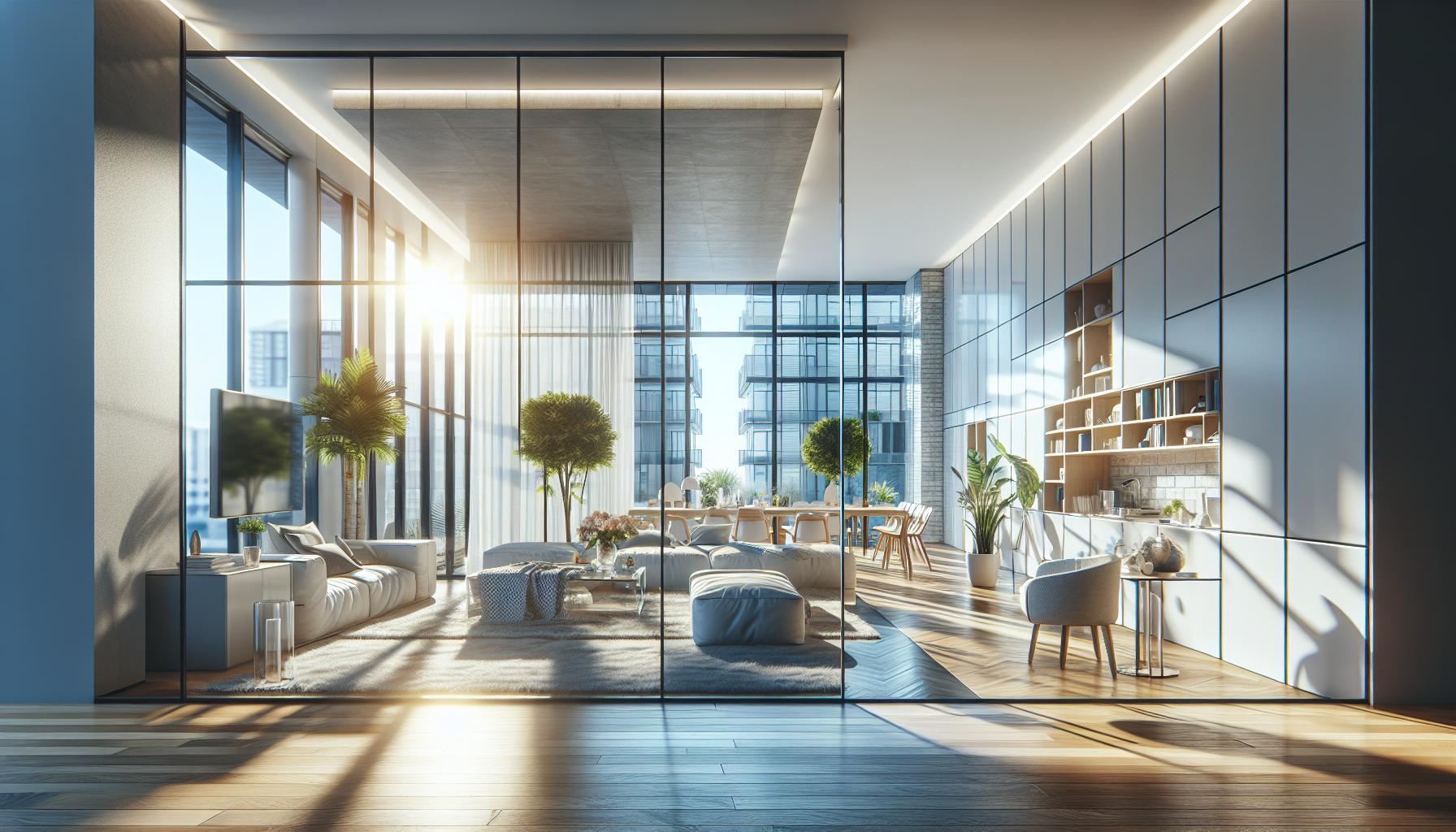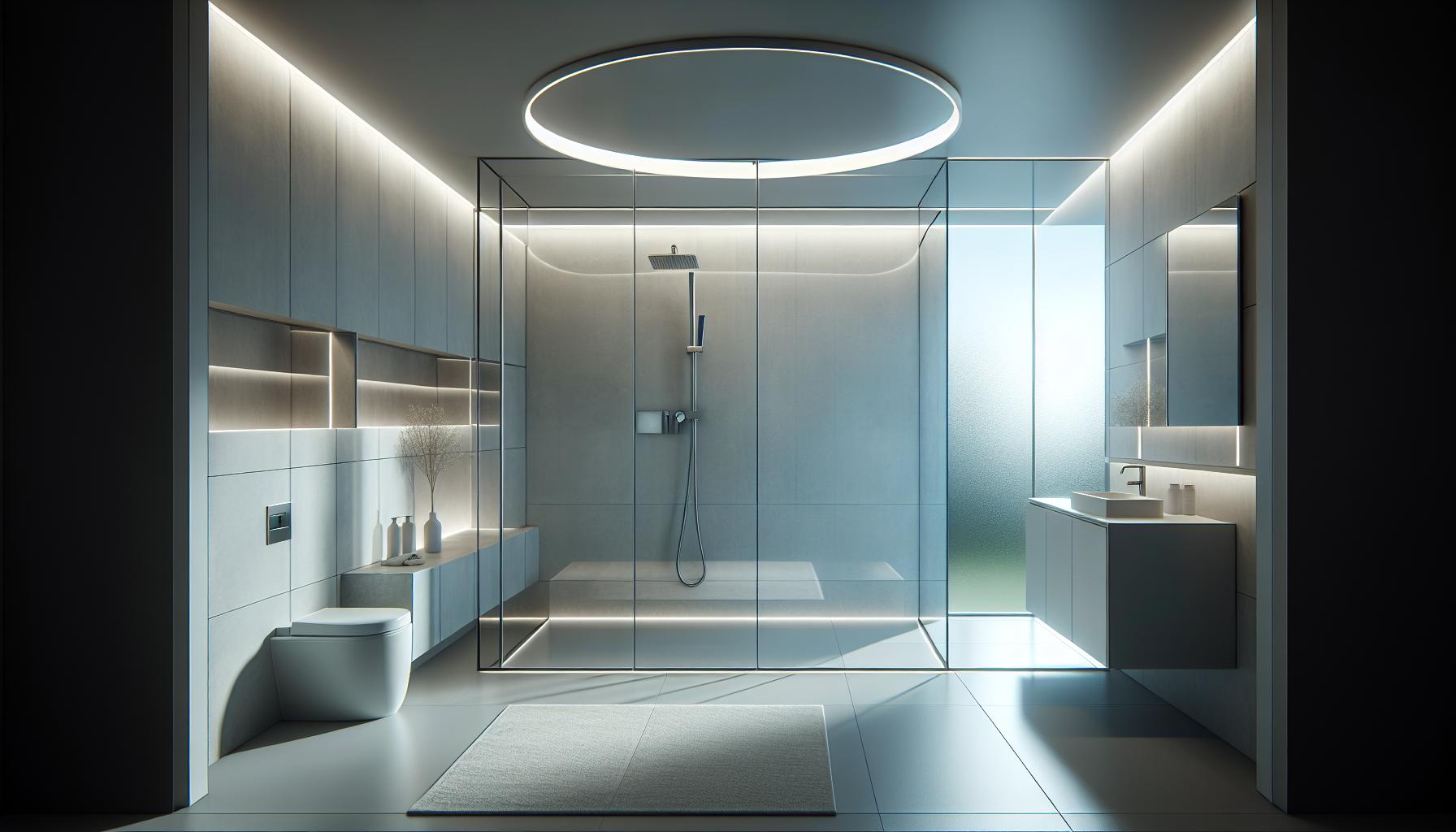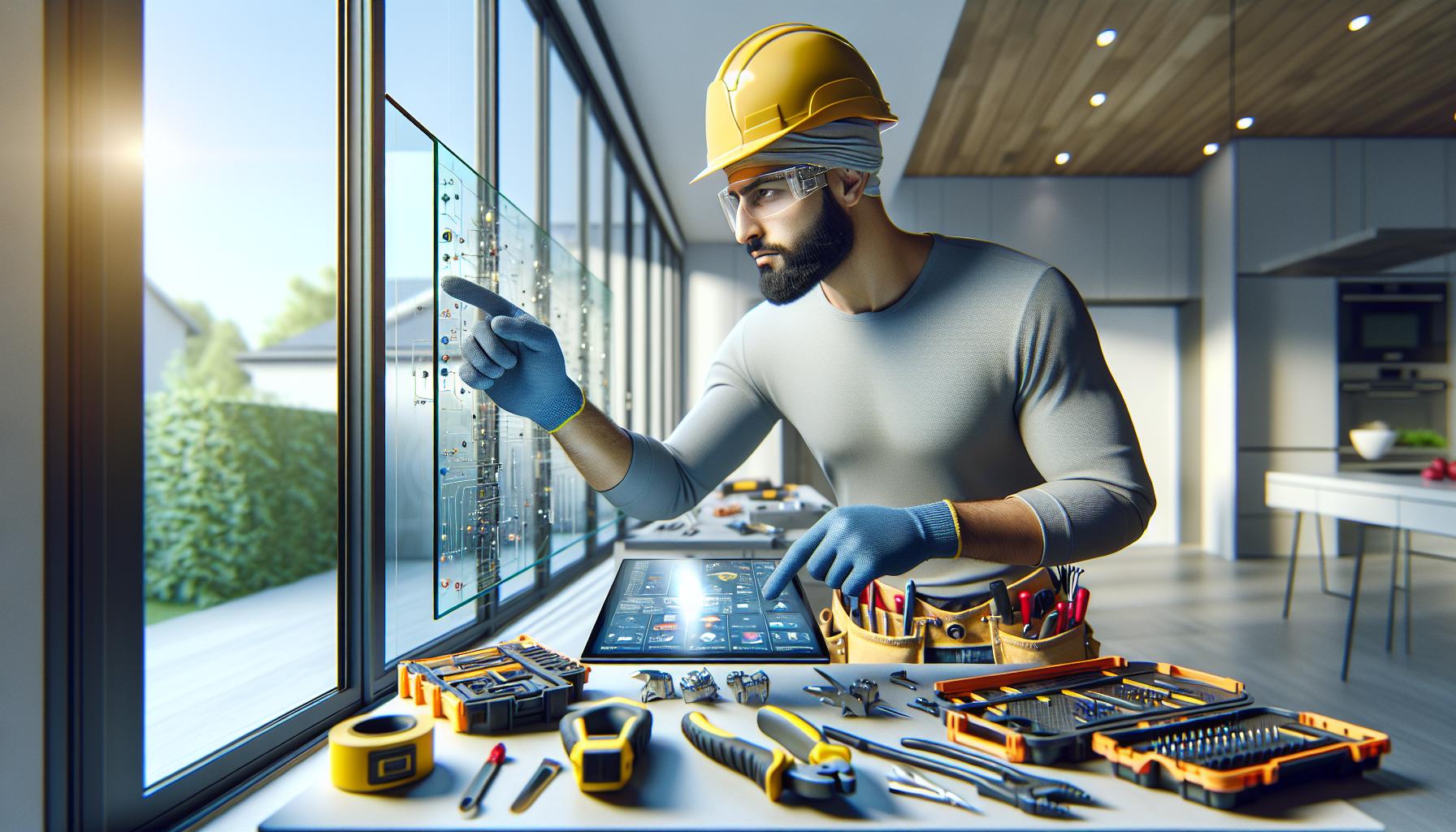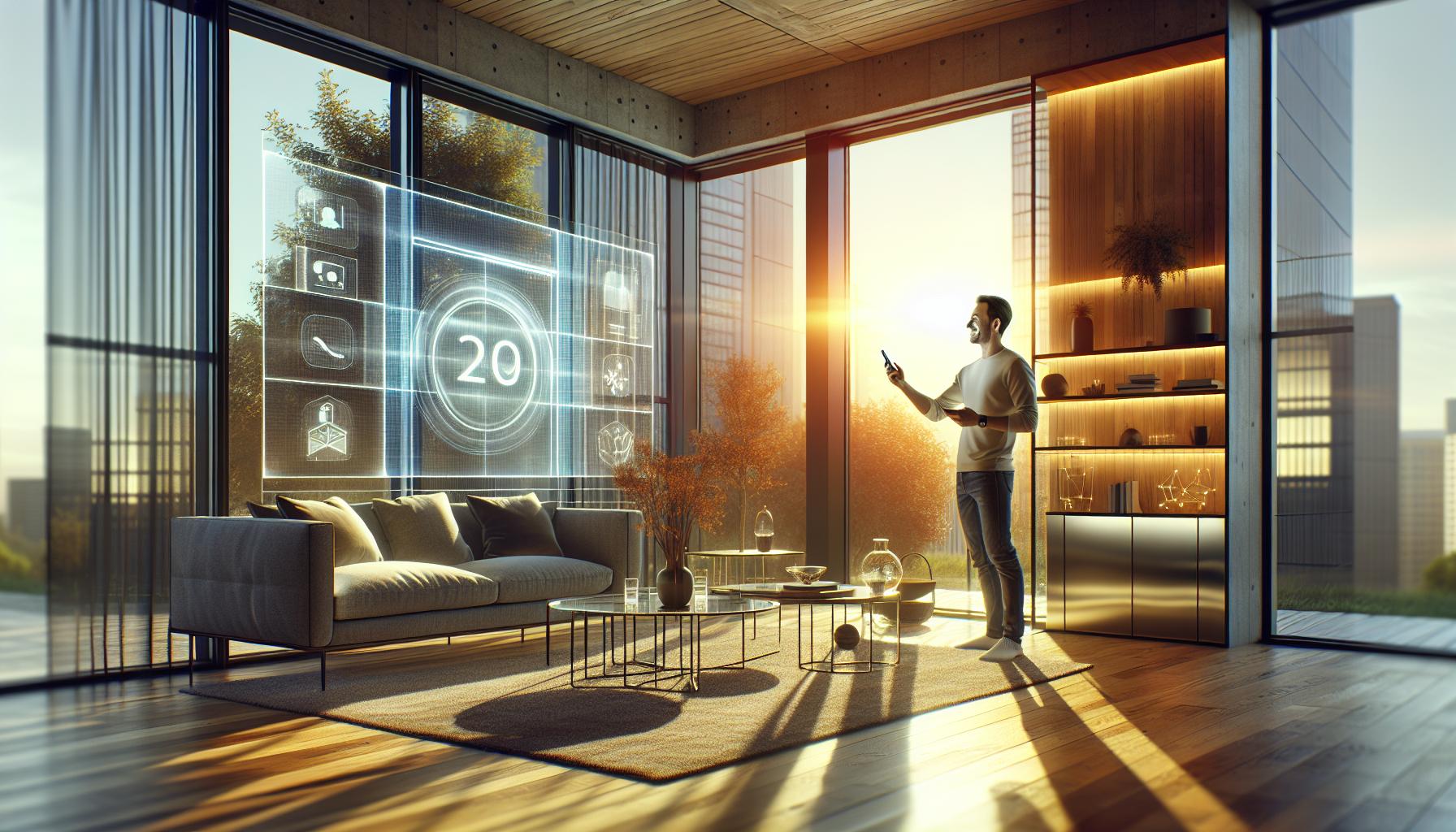I’ve watched smart home technology evolve over the years, but nothing excites me quite like smart glass. This innovative technology transforms ordinary windows into dynamic surfaces that can instantly switch from transparent to opaque with just a tap on your smartphone.
As a home automation enthusiast, I’m amazed by how smart glass is revolutionizing residential spaces. It’s not just about privacy anymore – these intelligent windows can reduce energy costs, protect your furniture from UV damage, and even double as projection screens for entertainment. The technology behind smart glass (also known as switchable glass or dynamic glass) has become more accessible and affordable for homeowners who want to modernize their living spaces while boosting their home’s energy efficiency.
Key Takeaways
- Smart glass technology allows windows to switch between transparent and opaque states electronically, offering instant privacy control and energy efficiency benefits
- Three main types of smart glass technologies exist: SPD (Suspended Particle Devices), PDLC (Polymer Dispersed Liquid Crystal), and Electrochromic – each with unique characteristics and applications
- Installation costs range from $100-200 per square foot for panels, plus additional expenses for installation labor, control systems, and wiring setup
- Smart glass can reduce cooling costs by 30% and heating expenses by 20%, while blocking 98% of harmful UV rays
- The technology integrates seamlessly with smart home systems, supporting voice control, mobile apps, and automation through platforms like Alexa, Google Assistant, and HomeKit
- With proper maintenance, smart glass installations can last 15-30 years depending on the technology type, requiring minimal upkeep compared to traditional window treatments
What Is Smart Glass Technology
Smart glass technology incorporates electronically switchable materials that change optical properties when voltage is applied. I’ve researched extensively how this dynamic glazing transforms from transparent to opaque through electrical stimulation.
How Smart Glass Works
Smart glass operates through a process called electrochromism, where an electric current passes through conductive layers sandwiched between glass panes. The system consists of:
- Conductive layers made of transparent materials like indium tin oxide
- An electrochromic layer that changes color with electrical charge
- An ion conductor layer that facilitates ion movement
- A counter electrode that stores ions when not in use
When activated, ions move between the electrochromic and storage layers, causing the glass to switch states in 3-7 seconds. The change remains stable without continuous power, consuming electricity only during transitions.
- Suspended Particle Devices (SPD)
- Uses suspended particles that align when charged
- Provides variable tint levels
- Switches states in under 3 seconds
- Polymer Dispersed Liquid Crystal (PDLC)
- Contains liquid crystals in polymer matrix
- Switches between frosted and clear states
- Ideal for privacy applications
- Electrochromic Devices
- Changes color through electrochemical reaction
- Offers gradual tinting control
- Most energy-efficient option
| Type | Switching Speed | Power Consumption | Lifespan |
|---|---|---|---|
| SPD | 1-3 seconds | 3-5 W/m² | 20+ years |
| PDLC | <1 second | 5-8 W/m² | 10-15 years |
| Electrochromic | 3-7 seconds | 1-2 W/m² | 30+ years |
Benefits of Smart Glass in Modern Homes

Smart glass transforms residential spaces with automated control systems that enhance living conditions through advanced technology. Here’s how smart glass delivers significant advantages in modern homes.
Enhanced Privacy Control
Smart glass eliminates the need for traditional window coverings by switching from transparent to opaque in 3-7 seconds. The instant privacy control activates through smartphone apps mobile devices or wall-mounted switches. I’ve observed that smart glass provides:
- Complete privacy protection in bathrooms bedrooms or home offices without curtains or blinds
- Customizable opacity levels ranging from 40% to 99% depending on the technology
- Integration with home automation systems for scheduled privacy settings
- Protection from unwanted viewing angles while maintaining natural light flow
Energy Efficiency Advantages
Smart glass reduces energy consumption through automatic temperature regulation electronic tinting. The energy-saving features include:
- 30% reduction in cooling costs during summer months
- 20% decrease in heating expenses during winter
- 98% UV ray blockage protecting furniture from sun damage
- Minimal power usage consuming electricity only during state transitions
| Energy Savings Category | Percentage Reduction |
|---|---|
| Cooling Costs | 30% |
| Heating Expenses | 20% |
| UV Ray Blockage | 98% |
- Automatic dimming based on external light conditions
- Variable tint levels adapting to sun position throughout the day
- Elimination of harsh shadows direct sunlight
- Maintained views clarity when in transparent state
- Reduced eye strain through glare control during peak sunlight hours
Popular Smart Glass Applications

Smart glass technology extends across various residential applications, transforming traditional spaces into dynamic environments. Here’s how smart glass enhances different areas of modern homes.
Windows and Doors
Smart glass windows provide instant privacy control for entrances doorways street-facing windows. The technology allows switching from clear to opaque in 3-7 seconds using a smartphone app mobile device or wall-mounted control panel. Modern applications include:
- Entry door panels with motion-activated privacy modes
- Large picture windows with automated tinting based on sunlight levels
- Sliding glass doors featuring programmable opacity schedules
- Bay windows with zoned privacy controls for individual panels
Bathroom Enclosures
Bathroom applications leverage smart glass technology to eliminate traditional shower curtains blinds. These installations offer:
- Shower enclosures with moisture-resistant smart glass panels
- Bathroom windows that activate privacy mode when occupied
- Frosted-to-clear vanity mirrors with touch controls
- Water-resistant smart glass partitions for wet rooms
- Conference room dividers with on-demand privacy
- Kitchen-to-dining room partitions for entertaining
- Home office walls that switch between transparent collaborative modes
- Media room dividers that double as projection screens
- Bedroom privacy screens with scheduled opacity changes
| Application Type | Switching Speed | Power Consumption | Lifespan |
|---|---|---|---|
| Windows/Doors | 3-5 seconds | 0.5W/sq ft | 20+ years |
| Bathroom Glass | 3-7 seconds | 0.6W/sq ft | 15+ years |
| Room Dividers | 1-3 seconds | 0.4W/sq ft | 25+ years |
Smart Glass Installation and Costs

Installing smart glass involves specific technical requirements and careful cost planning. I’ve analyzed the market and installation processes to provide detailed insights into both aspects.
Installation Requirements
Smart glass installation demands professional expertise due to its electrical components and precision requirements. A certified electrician connects the panels to a 120V AC power supply through concealed wiring systems. The installation process includes:
- Structural Assessment: Verification of window frame compatibility with smart glass panels
- Power Infrastructure: Installation of dedicated electrical circuits rated at 65W per 10 square feet
- Control Systems: Integration of switches, sensors or smart home hubs
- Weather Sealing: Application of specialized weather-resistant barriers around electrical components
- Safety Compliance: Implementation of proper grounding systems per local building codes
Price Considerations
Smart glass pricing varies based on size, type and functionality requirements. Here’s a breakdown of current market costs:
| Component | Cost Range (USD) | Unit |
|---|---|---|
| Basic PDLC Panel | $100-150 | per sq ft |
| Electrochromic Glass | $150-200 | per sq ft |
| Installation Labor | $25-40 | per sq ft |
| Control System | $500-1,500 | per panel |
| Wiring Setup | $200-500 | per window |
- Panel Dimensions: Custom sizes increase costs by 20-30%
- Integration Features: Smart home connectivity adds $300-700 per system
- Location Access: Upper floor installations increase labor costs by 15%
- Frame Modifications: Retrofitting existing frames adds $200-400 per window
- Warranty Coverage: Extended warranties range from $100-300 per panel annually
Integration with Smart Home Systems
Smart glass technology seamlessly integrates with modern home automation platforms to create a cohesive smart home ecosystem. The integration enables centralized control plus automated responses based on environmental conditions or user preferences.
Automation and Controls
Smart glass connects to home automation systems through standard protocols like Z-Wave, Zigbee or Wi-Fi. Integration options include:
- Motion sensors that trigger privacy mode when someone approaches
- Light sensors that adjust tint levels based on natural sunlight
- Temperature sensors that optimize glass opacity for energy efficiency
- Voice control through Amazon Alexa, Google Assistant or Apple HomeKit
- Scene programming to coordinate glass states with lighting, HVAC settings
- Scheduling features for automatic transitions at specific times
- IFTTT compatibility for custom automation recipes
- Real-time status monitoring of each glass panel
- Individual or group control of multiple panels
- Preset opacity levels for different activities
- Energy usage tracking and optimization suggestions
- Integration with existing smart home apps
- Push notifications for system alerts or changes
- Secure access controls for multiple users
- Custom scheduling through intuitive interfaces
| Feature | Compatibility |
|---|---|
| Voice Assistants | Alexa, Google Assistant, Siri |
| Protocols | Z-Wave, Zigbee, Wi-Fi |
| Mobile OS | iOS 12+, Android 8+ |
| Hub Requirements | SmartThings, Home Assistant, Control4 |
| API Access | REST API, Local API |
Maintenance and Durability
Smart glass requires minimal maintenance while offering exceptional durability compared to traditional windows with mechanical blinds or shades. Its advanced construction provides reliable performance when properly maintained.
Cleaning and Care Tips
I recommend cleaning smart glass panels with non-abrasive materials to preserve their functionality. Here’s an optimized cleaning protocol:
- Use microfiber cloths with mild soap solutions for weekly cleaning
- Apply ammonia-free glass cleaners specifically designed for electronic displays
- Clean electrical components with compressed air every 3 months
- Avoid harsh chemicals, abrasive pads or scrapers that damage conductive coatings
- Check seals quarterly for moisture penetration or damage
- Keep electrical connections dry during cleaning operations
Expected Lifespan
Smart glass installations demonstrate remarkable longevity under proper maintenance conditions:
| Component | Expected Lifespan | Cycles |
|---|---|---|
| PDLC Film | 15-20 years | 3+ million switches |
| Electrochromic | 20-30 years | 100,000+ switches |
| SPD Layer | 10-15 years | 1+ million switches |
| Electronics | 8-12 years | N/A |
- Operating temperature range of -20°F to 160°F
- UV resistance rating of 98%
- Impact resistance equal to standard safety glass
- Moisture protection rating of IP65
- Power surge protection up to 4000V
- Color stability for 10+ years without yellowing
- Delamination protection through edge sealing
Conclusion
Smart glass technology has transformed from a luxury novelty into a practical solution for modern homes. I’ve seen firsthand how it revolutionizes living spaces by combining privacy control energy efficiency and seamless automation.
As smart glass becomes more accessible and affordable I believe it’s an investment worth considering for any homeowner looking to enhance their living space. The benefits of reduced energy costs UV protection and automated convenience make it a compelling choice for home improvement.
Whether you’re building a new home or upgrading your existing space smart glass represents the future of residential window technology. I’m confident that as prices continue to drop and technology advances smart glass will become a standard feature in homes across America.

